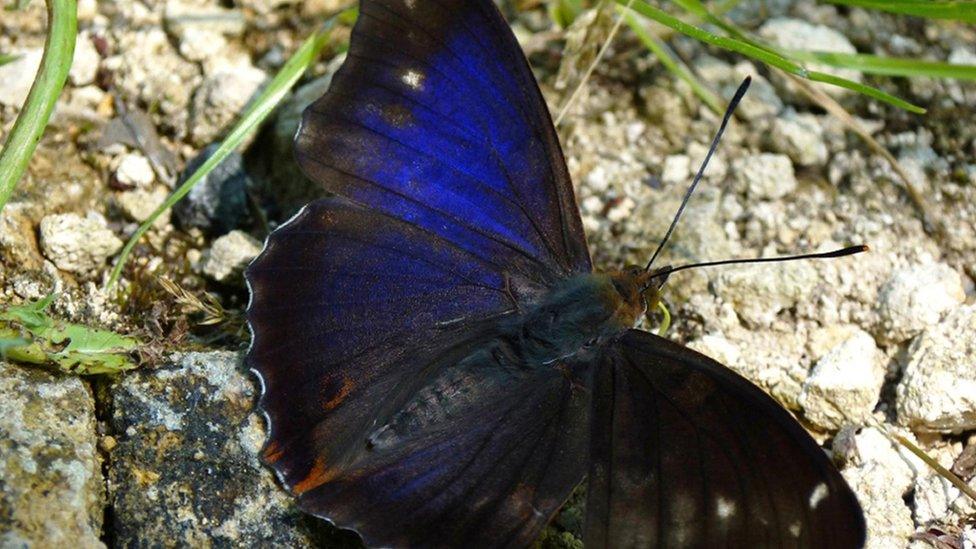Elusive purple emperor butterfly 'may be breeding' in Norfolk
- Published

The male purple emperor butterfly boasts an iridescent colour on its wings, while the females are brown
A rarely-spotted butterfly has been seen in Norfolk for the third year in a row, leading experts to believe the county has its first breeding colony.
The purple emperor butterfly has been seen fluttering around Sheringham Park.
Britain's second-largest butterfly had not been seen in Norfolk for 40 years, before being spotted in 2016 at the National Trust site.
Rob Coleman, who works at the park and made the sighting two years ago, called it a "significant moment for Norfolk".
The purple emperor - with the male boasting the iridescent colour on its wings - is elusive because it tends to fly high in the tree canopy.
Sheringham Park has several viewing towers overlooking the treetops, helping rangers to spot them.
Mr Coleman, the park's learning officer, said: "Butterfly watchers were on the lookout last year and three further sightings were made over the course of the summer.
"Now, for a third year running a male purple emperor has been spotted at Sheringham Park... a breeding colony is the most likely explanation."
Insect lifecycle
The butterflies tend to emerge in July, after spending about 300 days as caterpillars.
Keith Zealand, the park's countryside manager, said the purple emperors could have settled there due to the site's oak woodland as well as its sallow trees and shrubs, all of which are important in the insect's lifecycle.
"The males are quite aggressive - they do a lot of fighting among each other for females," he said.
"They have their fights in the treetops and then go off somewhere secludedā¦ and the eggs will be laid on sallow bushes."
The species is typically found in central southern England, but its elusiveness makes it difficult to identify how many there are in the UK.
- Published23 July 2015
- Published23 July 2015